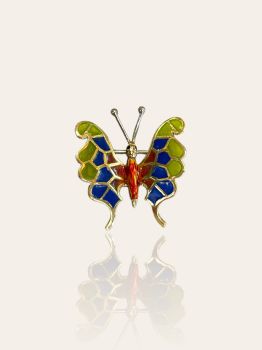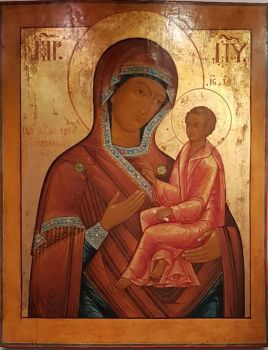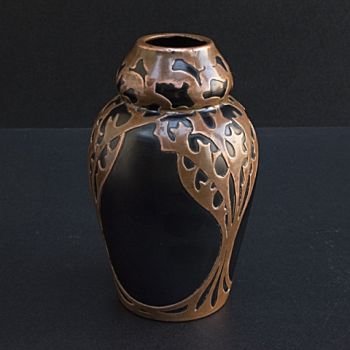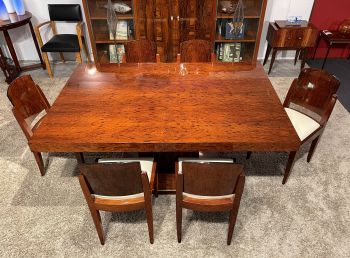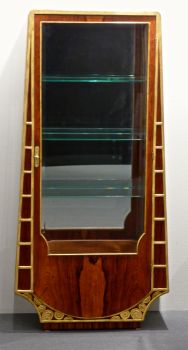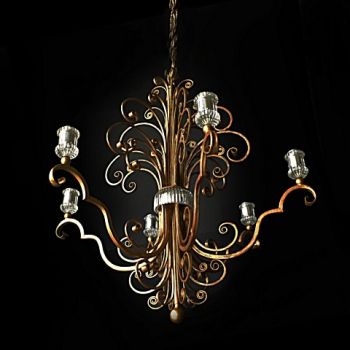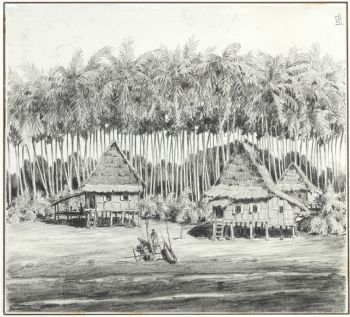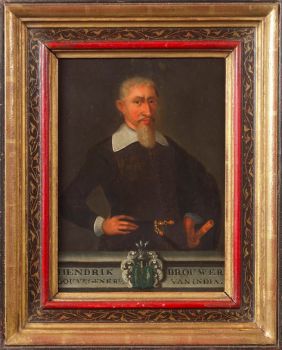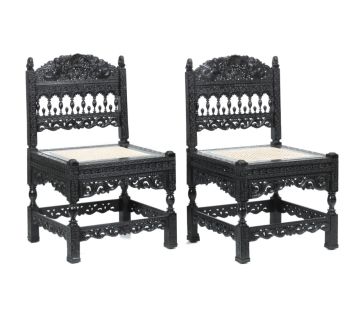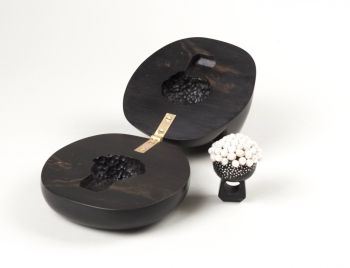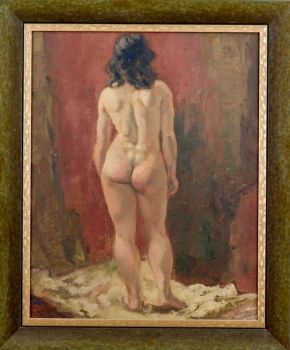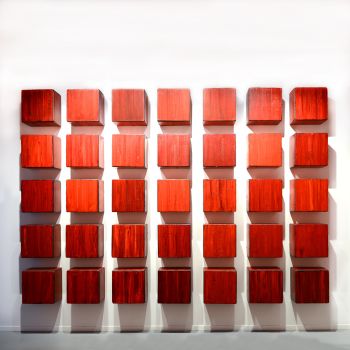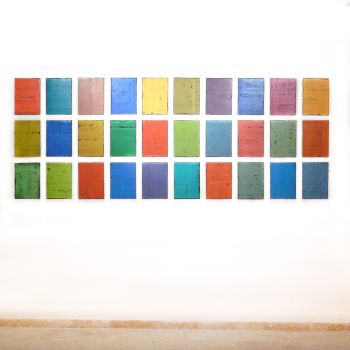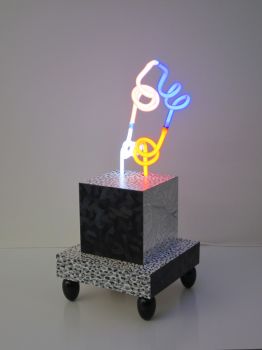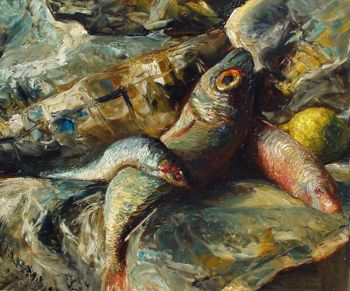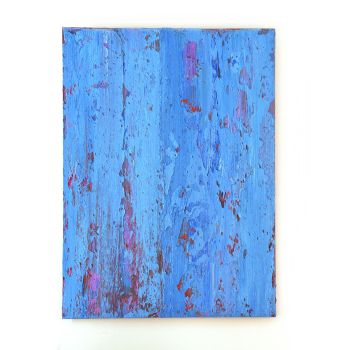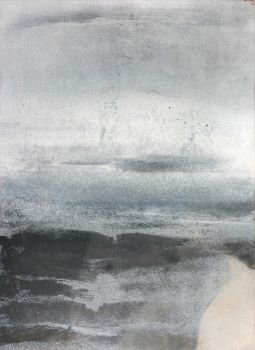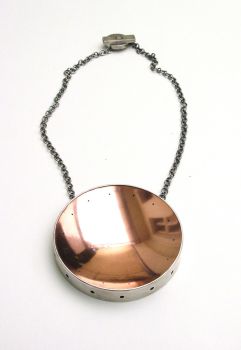A splendid Dutch-colonial Sinhalese ebony two-door cabinet with silver mounts 1600 - 1650
Artiste Inconnu
ÉbèneBoisArgent
29 ⨯ 32 ⨯ 23 cm
Prix sur demande
Zebregs & Röell - Fine Art - Antiques
- Sur l'oeuvre d'art
Sri Lanka, Kandy, 2nd half 17th century, the mounts later
The cabinet with a central drawer with hidden compartment and the top drawer divided into four compartments. The surface carved all-over with scrolling plants issuing fleshy lotus palmettes, and in addition the exterior of the doors with a pair of kinnaris, the top with a seated deity encircled by birds, the back with a central lotus rosette flanked by quadrupeds and birds, and lastly the sides with a serapendiya, bordered by narrow diaper kundi rakkan bands.
The richly decorated panels carved in differing degrees of relief reveal the skill of the Sinhalese craftsmen and the scrolls issuing a richness of flowers and fruits are indicative of the island’s vegetal abundance. Their stylization is result of a cross-fertilization of Dutch and Sinhalese decorative elements that appear on furniture, textiles and silver that later appeared across the Asian VOC territories. The mythical kinnaris, serapendiya and the kundi rakkan banding are typical forms of Sinhalese ornamentation, but not often seen on furniture for the Dutch. (Mediaeval Sinhalese Art, Ananda K. Coomaraswamy, Pantheon Books 1908).
For cabinets of similar form and decoration see: Furniture from Indonesia, Sri Lanka and India during the Dutch period, Jan Veenendaal, 1985 pl.25, 29 and 58. Comparable Sinhalese furniture and objects with related carved decoration can be found in the Royal Collection Trust (21610, 21611), the Museum of Fine Arts Boston (1993.29) and the British Museum (1943.0712.4).
Provenance:
Private collection, United Kingdom Peter Lang, United Kingdom - Sur l'artiste
Il peut arriver qu'un artiste ou un créateur soit inconnu.
Certaines œuvres ne doivent pas être déterminées par qui elles sont faites ou elles sont faites par (un groupe d') artisans. Les exemples sont des statues de l'Antiquité, des meubles, des miroirs ou des signatures qui ne sont pas claires ou lisibles, mais aussi certaines œuvres ne sont pas signées du tout.
Vous pouvez également trouver la description suivante :
•"Attribué à …." A leur avis probablement une oeuvre de l'artiste, au moins en partie
•« Atelier de …. ou « Atelier de » À leur avis, une œuvre exécutée dans l'atelier ou l'atelier de l'artiste, éventuellement sous sa direction
•« Cercle de… ». A leur avis une oeuvre de la période de l'artiste témoignant de son influence, étroitement associée à l'artiste mais pas forcément son élève
•« Style de … ». ou "Suiveur de ...." Selon eux, une œuvre exécutée dans le style de l'artiste mais pas nécessairement par un élève ; peut être contemporain ou presque contemporain
•« Manière de… ». A leur avis une oeuvre dans le style de l'artiste mais d'une date plus tardive
•"Après …." A leur avis une copie (quelle qu'en soit la date) d'une oeuvre de l'artiste
•« Signé… », « Daté… ». ou « Inscrit » À leur avis, l'œuvre a été signée/datée/inscrite par l'artiste. L'ajout d'un point d'interrogation indique un élément de doute
• "Avec signature ….", "Avec date ….", "Avec inscription …." ou "Porte signature/date/inscription" à leur avis la signature/date/inscription a été ajoutée par quelqu'un d'autre que l'artiste
Êtes-vous intéressé par l'achat de cette oeuvre?
Artwork details
Related artworks
- 1 - 4 / 12
Artiste Inconnu
A Dutch colonial Indonesian betel box with gold mounts1750 - 1800
Prix sur demandeZebregs & Röell - Fine Art - Antiques
Artiste Inconnu
A rare Japanese export lacquer medical instrument box1650 - 1700
Prix sur demandeZebregs & Röell - Fine Art - Antiques
Artiste Inconnu
Japanese transition-style lacquer coffer 1640 - 1650
Prix sur demandeZebregs & Röell - Fine Art - Antiques
1 - 4 / 24Artiste Inconnu
UN PLAT EN ARGENT LOBBED INDONÉSIEN INSOLITElate 17th
Prix sur demandeZebregs & Röell - Fine Art - Antiques
Artiste Inconnu
A large Japanese Imari porcelain 'VOC Groningen' dish1800 - 1925
Prix sur demandeZebregs & Röell - Fine Art - Antiques
1 - 4 / 24- 1 - 4 / 24
Artiste Inconnu
UN FILET D'IVOIRE D'UN DUTCHMAN TENANT UN COCKEREL18th century
Prix sur demandeZebregs & Röell - Fine Art - Antiques
Artiste Inconnu
The Stamford Raffles Secretaires.1800 - 1813
Prix sur demandeZebregs & Röell - Fine Art - Antiques
1 - 4 / 12




